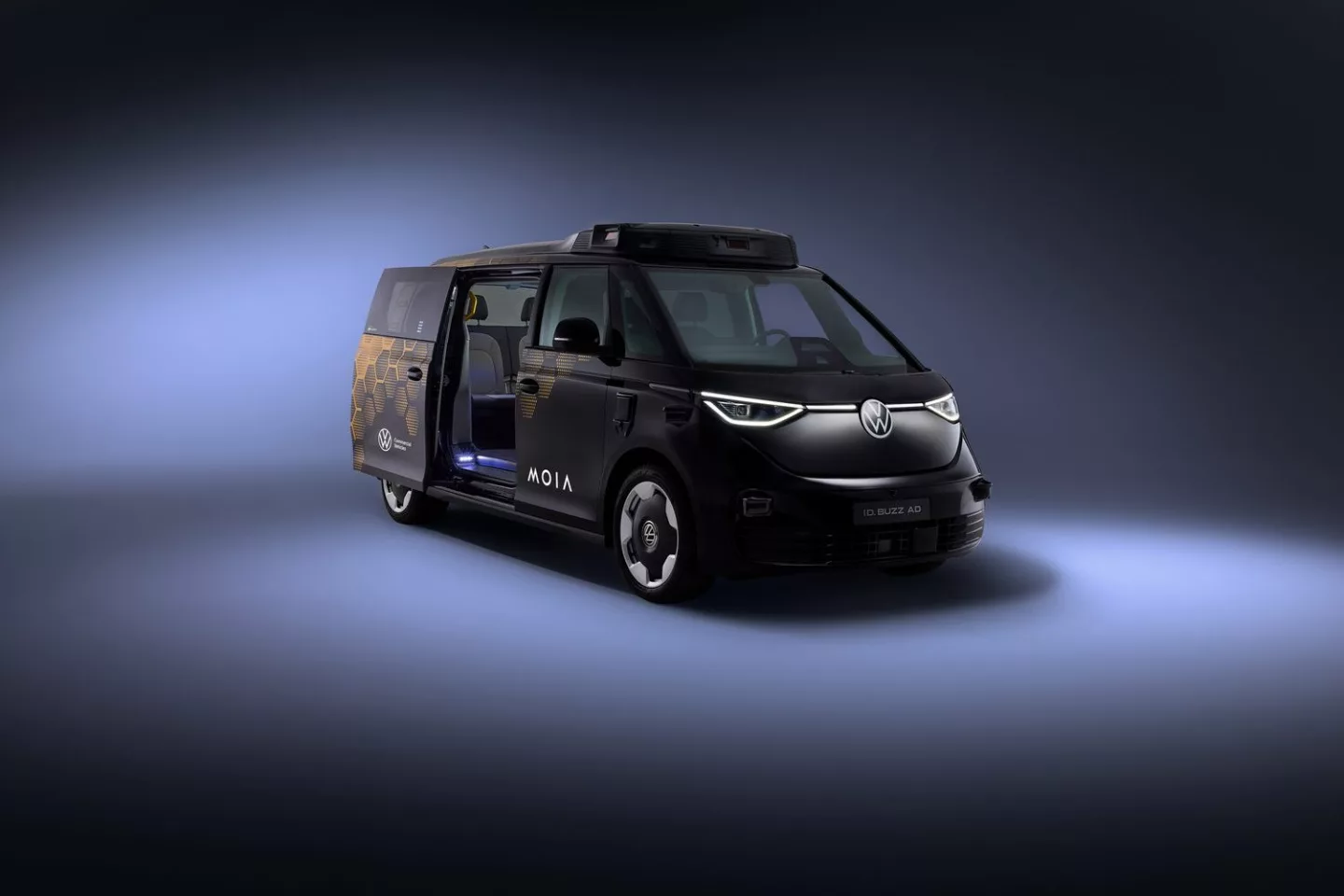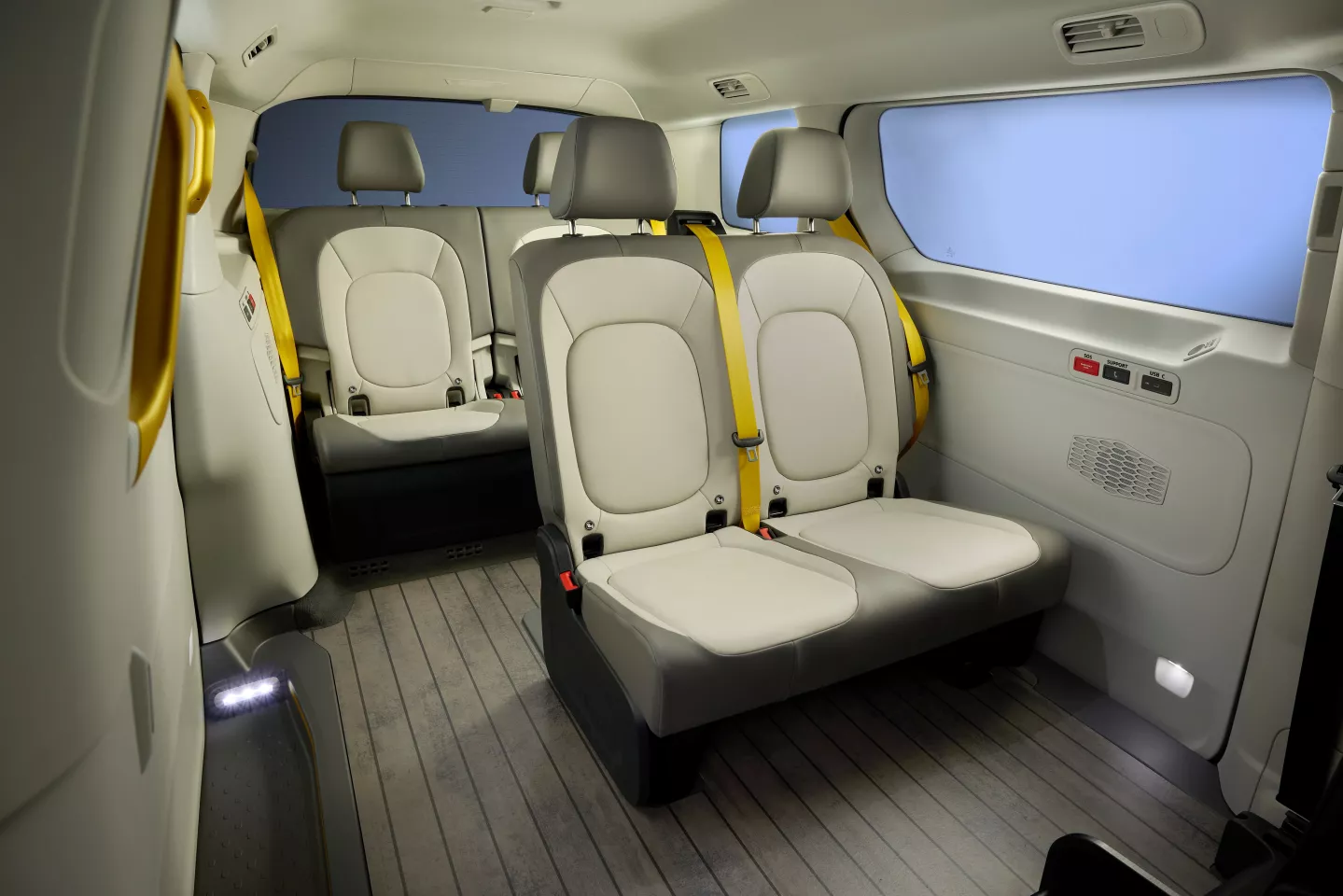Nope, we're not talking about a Tesla Robotaxi we’re talking about. This is the self-driving ID. Buzz, a fully autonomous van created and engineered by Volkswagen’s mobility-focused sub-brand, MOIA. Unlike retrofitted cars, the ID. Buzz has been built from the ground up specifically for mobility services.
For the past few years, the ID. Buzz has been frequently spotted during tests on the streets of Hamburg. MOIA plans to launch the vehicle in Germany first, with wider rollout across Europe and the US expected by 2026.
Just days ago, Elon Musk announced that Tesla’s Robotaxis would begin official testing in Austin, Texas. VW’s announcement signals that competition in autonomous mobility is heating up. But there’s a key difference: MOIA is aiming at corporate clients and mobility providers, while Tesla is targeting the passenger ride-hailing market directly.
This means you're more likely to see fleets of ID. Buzz vans operated by companies than owned by your next-door neighbor.

“With our fully autonomous complete solution, we are creating a mobility offering that is unique in this form: cities, municipalities, and fleet operators can provide autonomous mobility for all simply and reliably,” said Oliver Blume, CEO of the Volkswagen Group. “Our driverless ID. Buzz shuttles are part of a fully connected 360-degree package made up of leading technology, an attractive vehicle fleet, intelligent fleet management, and a customer-centric booking system – all from a single source and quickly scalable to fleet size on the road."
The ID. Buzz comes bundled with a comprehensive support suite for public and private transportation operators, including self-driving tech, operator training, fleet management software, and passenger assistance tools.
The van uses Mobileye’s validated self-driving technology that has been validated to meet automotive safety regulations. Paired with MOIA’s Autonomous Driving Mobility-as-a-Service (AD MaaS) platform, the ID. Buzz doesn’t just drive itself, it integrates with ride apps, manages fleets, and can respond to operational challenges autonomously.
VW even offers end-to-end operator enablement, including simulation, training, deployment, and real-time fleet monitoring. Operators will be able to serve rural, suburban, and urban areas on their own terms.

The van features a full 360-degree view enabled by 27 sensors: 13 cameras, nine LiDAR units, and \give radar sensors. Its AI meets the requirements for Level 4 autonomy, meaning it can handle all driving without human intervention in specific scenarios, which is on par with Waymo’s fleet of Jaguar I-Pace vehicles in the US.
There is already vigorius competition in this market. Waymo is apparently handling around 250,000 trips a week, and Tesla says it is close to launching a robotaxi service with its Model Y.
Where Tesla and Waymo favor standard car formats, the ID. Buzz looks and feels different with a vehicle that sits somewhere between a minivan and a small bus. Expect generous legroom, a taller roof, a longer wheelbase, and even a luggage rack where the front passenger seat would typically be.
Inside, passengers will find a plush cabin with four seats, large grab handles, faux-wood flooring, and visible Start/Stop, Support, and SOS buttons. “Intuitive boarding via smartphone” allows users to unlock the van using their device.

If regulatory approval goes ahead, deployment could begin as early as next year.
"As part of our journey to become a global technology leader in the automotive industry, we will introduce sustainable, autonomous mobility to large-scale deployment in Europe and the US starting in 2026," said Blume.

Hamburg is already confirmed as MOIA’s first municipal client, using the Buzz as a complement to existing public transport. Meanwhile, a partnership with Uber will bring the ID. Buzz to Los Angeles in 2026, marking its entry into the US ridesharing market.
Source: MOIA








